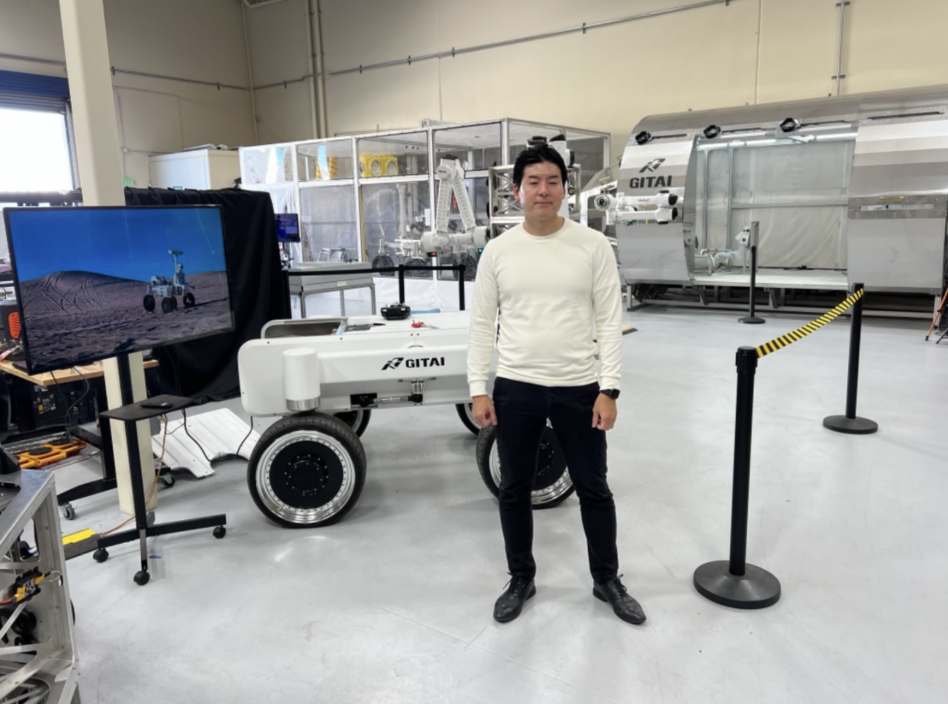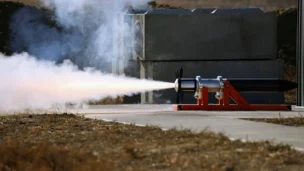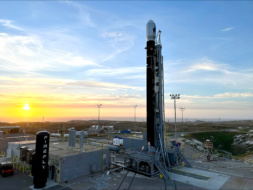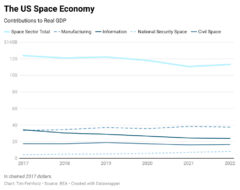TORRANCE, CA—In every corner of GITAI’s bustling factory, a unique and fully operational robotic demo was on display, each preparing for its day in space.
The startup had a 2-m robotic arm slinky-walking across a mock space station, a rover shoveling faux lunar regolith, a pair of robotic arms autonomously testing its calibration with fiducial markers, and a robotic arm working in tandem with a rover assembling a communication tower.
CEO Sho Nakonose and his team of 40 employees looked on, brimming with pride as metal came to life. While the robots have proved they can work on Earth, GITAI’s tech is about to face its biggest test yet, conducting operations in the vacuum of space on the exterior of the ISS.
The ISS gets two arms: Two smaller versions of the space robotics startup’s signature robotic arm are expected to launch aboard a Falcon 9 (NG-20) bound for the ISS on Monday. The 1.5-m long mechanical arms will be installed outside the station’s Bishop Airlock to demo capabilities such as mating connectors, changing out tools, and other maintenance operations tasks required for on-orbit servicing.
The launch of the tech marks an important milestone for GITAI’s dreams of using robots as vanguards to build a space economy, which began when the company was founded seven years ago.
A robot’s role: Sho Nakonose founded GITAI in Tokyo, naming the company after a cyborg character in his favorite Japanese anime. The name was a fitting choice given the company’s mission of building mobile robots capable of performing complex and unpredictable tasks usually reserved for humans.
“Our technology comes from humanoid robotics tech that combines high accuracy with high power torque,” Nakonose told Payload.
To realize the vision, GITAI closed $45M in Series B funding last year and moved its headquarters and parent company from Japan to the US.
The Torrance, CA-based business recently opened its doors to Payload, showcasing tech far along in the development timeline.
Inchworm arm: GITAI’s robotic offerings center on its jack-of-all-trades robotic arm, which can perform a wide range of complex tasks in space, including turning screws, grabbing, and shoveling.
- The arm’s interchangeable hand can rotate between a variety of tools.
- It’s 99% autonomous, using human-in-the-loop checkpoint verifications.
- The arm has been nicknamed the Inchworm due to its unique ability to move across a surface in a slinky walk.
A 1-m autonomous arm from GITAI has already been tested in space, assembling solar panels inside the ISS in 2021.
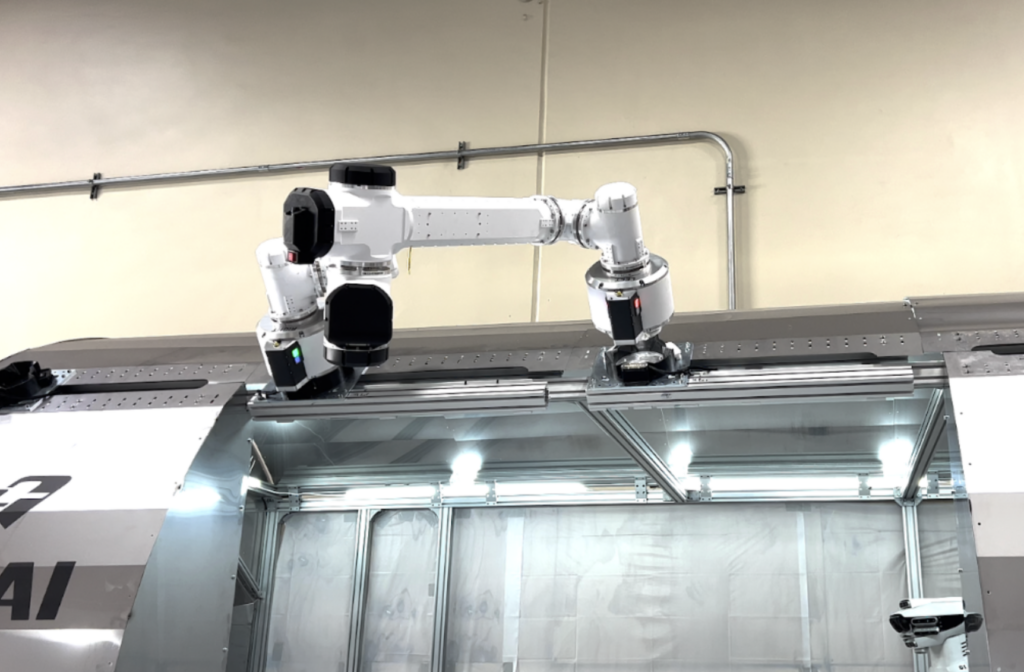
Robotic Mobility
At GITAI, nothing is stationary. Look left, and a team of engineers is driving a rover around the facility. Look right, and the Inchworm arm is climbing a structure. To achieve GITAI’s vision of the future space economy, the team knows mobility is key.
Movement transforms the arm from a stationary machine into an agile tool capable of completing tasks in a dynamic environment.
Vehicle mobility: Beyond the Inchworm arm’s “walking” capability, the company is also appending robotic arms to servicing spacecraft, space stations, and lunar rovers, creating a wide range of mobile maintenance and construction capabilities.
All three robotic armed vehicles are in the later stages of development; however, Nakonose said the company plans to roll out its spacecraft servicing offering to the market first. “In the short term, orbit servicing will be the focus of the business, but in the long term, the Moon, Mars, and beyond is a huge opportunity,” he said.
In-orbit servicing arm: GITAI is equipping spacecraft with its advanced robotic arms to offer life extension and various in-space assembly and manufacturing (ISAM) services while in orbit.
- The company plans to launch its first satellite in 2024 and rendezvous with a second robotic arm-equipped spacecraft in 2025.
Space station arm: The company has built a 10-meter prototype arm—much larger than the Inchworm that will be installed on the ISS—to service the exterior of future commercial space stations. The Inchworm arm’s unique walking ability will allow it to move along the outside of a space station.
- The arm is similar to the Canadarm on the ISS, but the company says it differentiates itself with advanced motor driver technology, mobility, functionality in gravity environments, and lower production costs.
Lunar rover arm: For lunar operations, GITAI has built a 500-kg rover with robotic arms designed to set up communication towers, install solar panels, construct habitats, and shovel ice on the Moon to help set up infrastructure for humans.
- GITAI expects the rover to be finished in two years, once the company has completed environmental testing and built improved energy storage to survive long lunar nights.
- The rover is designed to be deployed on a Starship lander.
- The company was recently selected to participate in DARPA’s LunA-10 study to explore deploying its tech on the Moon.
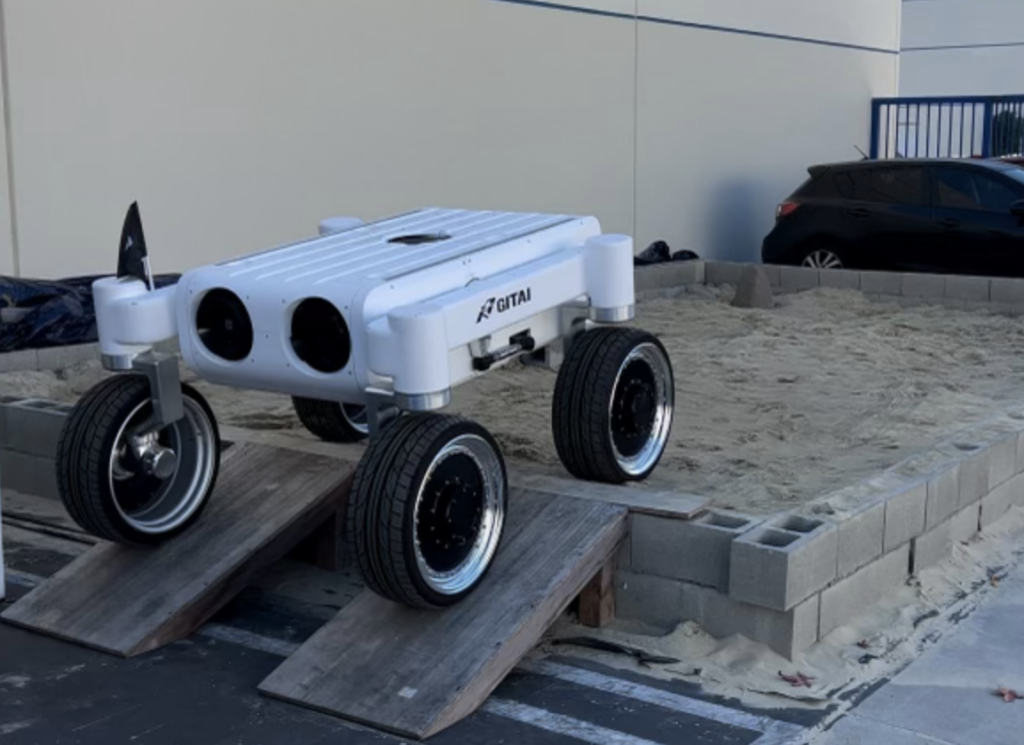
Robo-economics: Whereas terrestrial robots encounter stiff competition from highly capable human workers, space is an environment much better suited for our robotic friends.
Introducing humans into space significantly escalates mission complexity, safety risks, and costs. According to an ISS pricing sheet, NASA pegs the cost of an astronaut’s time aboard the ISS at $130K/hour.
GITAI believes introducing mobile robots could reduce mission costs by 90%+ and help set up infrastructure for future human activity in space.
“Humanity has been expanding horizontally,” Nakonose said. “Now is the time to expand vertically.”
